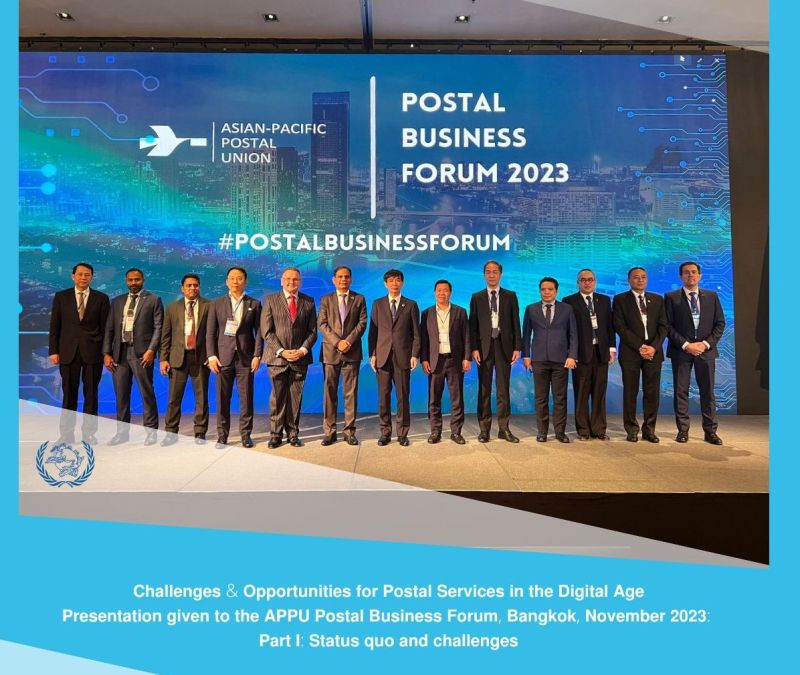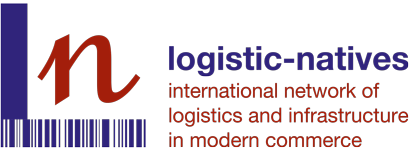𝗖𝗵𝗮𝗹𝗹𝗲𝗻𝗴𝗲𝘀 & 𝗢𝗽𝗽𝗼𝗿𝘁𝘂𝗻𝗶𝘁𝗶𝗲𝘀 𝗳𝗼𝗿 𝗣𝗼𝘀𝘁𝗮𝗹 𝗦𝗲𝗿𝘃𝗶𝗰𝗲𝘀 𝗶𝗻 𝘁𝗵𝗲 𝗗𝗶𝗴𝗶𝘁𝗮𝗹 𝗔𝗴𝗲 | Part I

𝗣𝗿𝗲𝘀𝗲𝗻𝘁𝗮𝘁𝗶𝗼𝗻 𝗴𝗶𝘃𝗲𝗻 𝘁𝗼 𝘁𝗵𝗲 𝗔𝗣𝗣𝗨 #𝗣𝗼𝘀𝘁𝗮𝗹𝗕𝘂𝘀𝗶𝗻𝗲𝘀𝘀𝗙𝗼𝗿𝘂𝗺, 𝗕𝗮𝗻𝗴𝗸𝗼𝗸, 𝗡𝗼𝘃𝗲𝗺𝗯𝗲𝗿 𝟮𝟬𝟮𝟯:
𝗣𝗮𝗿𝘁 𝗜: 𝗦𝘁𝗮𝘁𝘂𝘀 𝗾𝘂𝗼 𝗮𝗻𝗱 𝗰𝗵𝗮𝗹𝗹𝗲𝗻𝗴𝗲𝘀
The status quo of cross-border #ecommerce:
• 90% of all ecommerce deliveries are made by 10% of courier, express and parcel operators;
• more than 50% of all #retail items sold #online are now managed via an emerging semi-interconnected, transcontinental supply chain infrastructure;
• tracked volumes in the #UPU end-to-end network have fallen by 50% over the past 3½ years;
• most B2C items are delivered using harmonized #dataexchanged in advance for #customs, #import duty, transport security and #productsafety purposes;
• pre-lodging electronic documents at item level allows advance #harmonization of data for all #freight and transport modes;
• vendor registration schemes switch liability to the (deemed) seller;
• #sustainablepackaging and globally harmonized #measurement, #accounting and #reporting of #CO2 and #greenhousegas (#GHG) emissions will be achieved using #data already available.
Global express #operators, consolidators, tariff brokers, #cargo operators, and free zone operators have taken advantage of accelerated #digitalization stimulated by global crises (e.g., #COVID) and legal/regulatory enhancements (customs, transport security, product safety). Consequently, volumes have shifted from postal to commercial networks.
The main driver of volume growth has been electronic retail interfaces (#marketplaces, websites, portals, social media). The UPU’s postal network has not been able to adjust so far.
𝗧𝗵𝗲 𝟰 𝗸𝗲𝘆 𝗰𝗵𝗮𝗹𝗹𝗲𝗻𝗴𝗲𝘀 𝗳𝗮𝗰𝗶𝗻𝗴 𝗱𝗲𝘀𝗶𝗴𝗻𝗮𝘁𝗲𝗱 𝗽𝗼𝘀𝘁𝗮𝗹 𝗼𝗽𝗲𝗿𝗮𝘁𝗼𝗿𝘀 (𝗗𝗢):
1. #Electronicretail interfaces prefer end-to-end #visibility. Basic UPU products and services lack direct #interconnectivity to designated operators at destination. Result: volumes taken by consolidators.
2. Electronic retail interfaces require a unique link to the first logistic operator – a barcode visible throughout the entire supply chain. UPU products and services prohibit the application of the destination DO #barcode applied at origin. Result: lack of seamless Track & Trace, re-labelling, supply chain interruptions.
3. Cross-border electronic retail interfaces need digitally interconnected presentation, high speed customs clearance & hassle-free collection of customs and import fees. The UPU beneficial #customs channel based on analogue (paper) has become a disadvantage. Result: clearance via the destination DO is slower and analogue processes result in additional cost for postal channel.
4. Electronic retail interfaces use predictive #analytics. However, the majority of DOs offer no managed and controlled bonded fulfilment at destination. Result: cash-flow challenge for suppliers.
Click here for the LinkedIn-Article.

Walter Trezek
Document Exchange Network GmbH

